$0.00
No products in the cart.
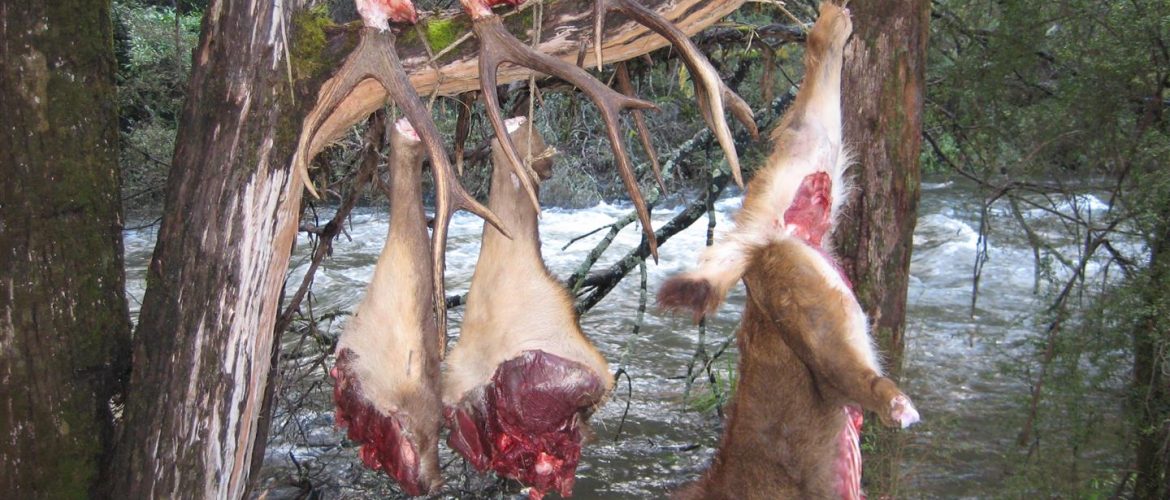
There appears to be a growing trend amongst many hunters to fully utilize the wonderful resource we have with our sambar herd. From small goods, to roasts, jerky, schnitzels, sausages, salami, stir fries and curries the possibilities are simply endless. More and more hunters are realizing that when butchered and prepared correctly our sambar provide an immense amount of lean high quality, free range organic red meat that can easily rival the best beef with many dishes. And for the partsthat might not be edible for human consumption they can go straight into the dog kennels and feed the hard working companions.
The harvesting and field preparation process can be critical as to how the end product finishes up on the fork so I thought I would go over a few tips we have implemented when hunting sambar for the freezer for dietary intake.
Sometimes you can’t pick and choose exactly what animal you want to harvest so I try to adjust the butchering process to suit the sex and age of the animal. If I happen to shoot a mature stag, then there is a mountain of meat, but a lot of that will get turned into mince for pastas, meat pies, sausage rolls, etc. Sometimes the older males can be quite lean and maybe not the best cut for steaks or schnitzels, but backstrap and prime cuts diced up and slow cooked can be ideal for casseroles and curries. Even after proper aging the older males can still be a little tough on the fork, so still utilize the meat, just be creative with how you cook it. Keep in mind that same mature stag will taste a whole lot different when in velvet and his fat content is elevated, but its certainly not ideal or appropriate to be going around shooting sambar stags in velvet just to put in the freezer.

The perfect age to harvest a deer is probably under 2 years, some would say even younger and I have to agree with them. The meat from a young sambar, be it male or female is excellent eating and if there is a few deer in a herd or feeding out on a clearing then the younger animals are the ones to target. Take your time and choose wisely what you put in the crosshairs if you have to make decisions. Younger animals are easier to maneuver in the bush when performing field care and also lighter to carry out, especially if you are on your own. There is nothing wrong with taking a mature sambar hind as well for the table, they eat well, but again, think about how you are going to prepare her if she has seen a few winters pass.
Young velvet spikers are very good to eat and many hunters believe the meat from these males have more flavor then the females, but we need to be very cautious about the harvest of male sambar. We have covered this in previous articles, the continued shooting of young male sambar, and these are the animals that probably should be left alone to increase the sex ratio and age class of males within the overall herd.
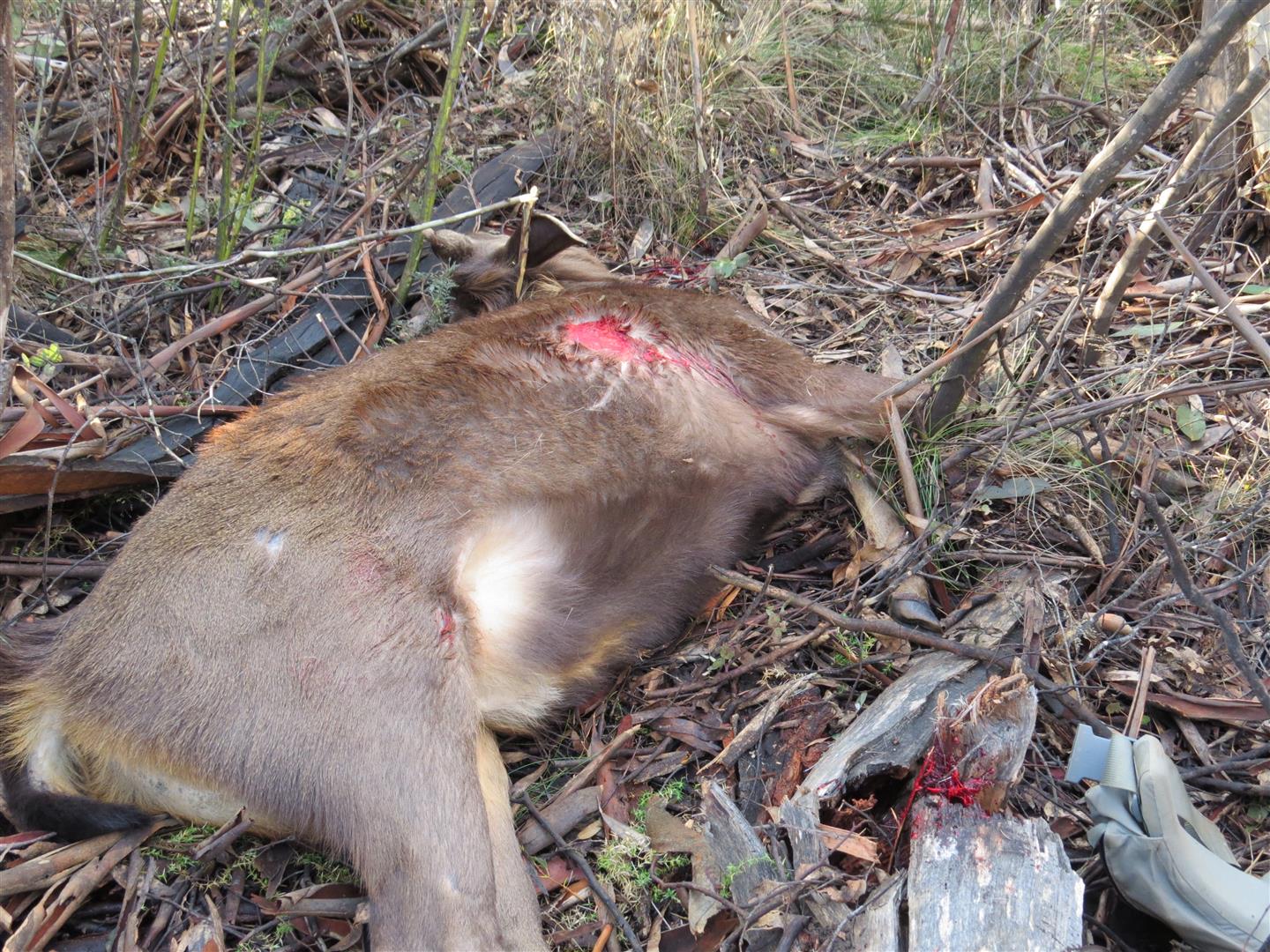
Make sure you give plenty of thought as to what equipment you carry when you head into the bush. You will need a quality esky or two that’s large enough to handle the prime cuts from a sambar. It’s always good to have ice on hand in the esky to keep the temperature down and create a suitable climate for your meat. Sharp knives are a must and many hunters are now using boning and skinning knives from butchers supplies. These feel good in the hand, are durable and affordable. Meat bags are important, some guys will use pillow cases, heavy duty plastic bags or even homemade creations that are custom sized to suit the different cuts. If you can use bags made of a material that allow air to circulate through then that’s ideal. Some hunters will cut meat up with latex gloves on, but this is a personal choice. A hand cleanser or disinfectant is probably a good idea to include in your gear kit as you will be preparing food for human consumption.
Shot placement is very important, you need to give it some thought. There is no advantage in taking angling, running or low percentage type shots where bullets might enter or exit in areas where the better cuts are. You will just ruin meat and that’s not ideal if you want to fully utilize an animal. Side on double lung or top of heart type shots are high percentage aiming points that quickly kill the deer and normally allow some blood loss in the process. Head, neck, shoulder or spine type shots can definitely put deer down on the spot, and this might prevent some adrenalin from coursing through the blood system, but they can also be low percentage shots where wounded deer become irretrievable if they aren’t executed correctly or the animal moves slightly when a shot is taken.
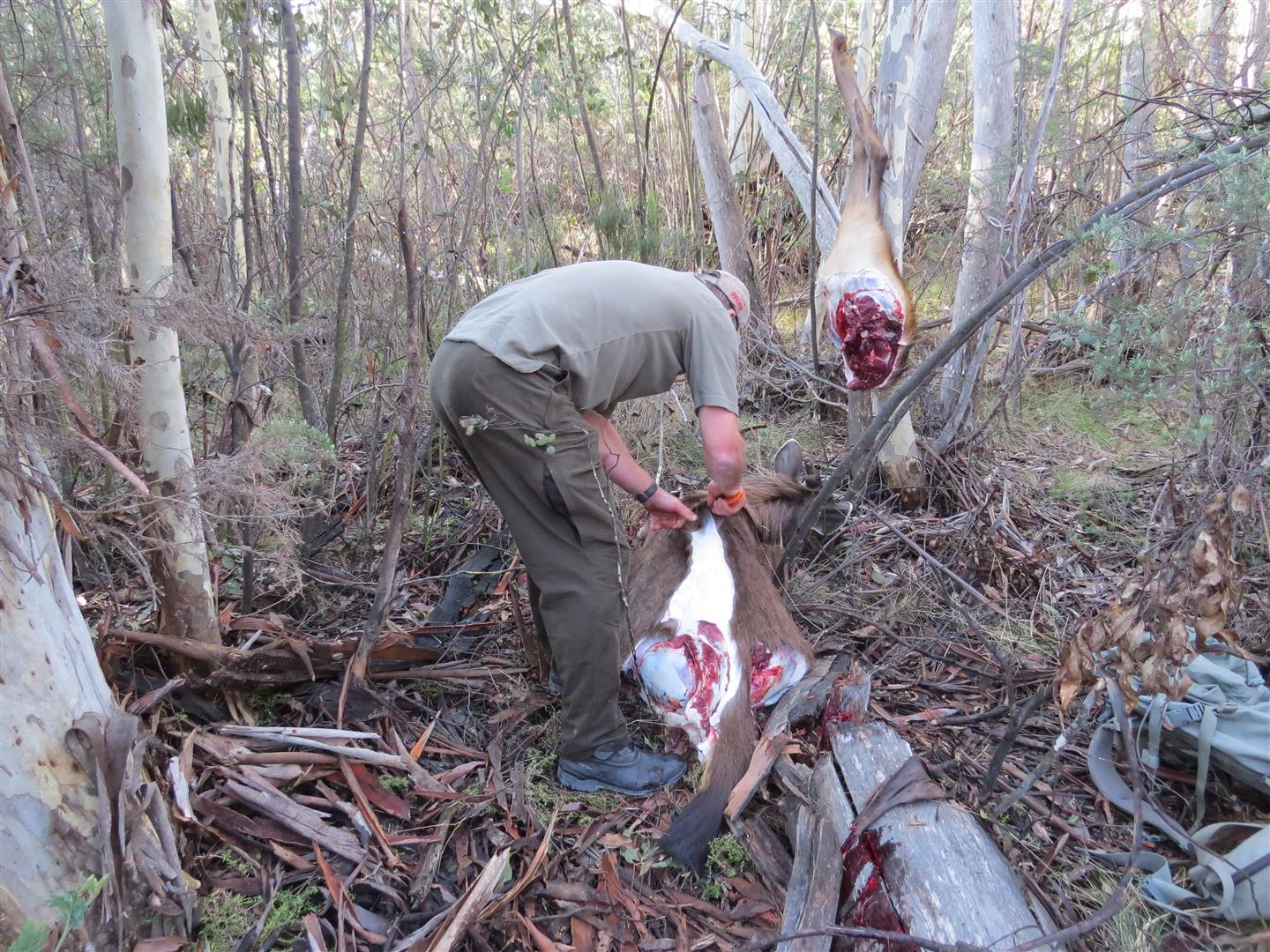
Once I have shot a sambar for the freezer, I try to get up there as quick as possible, point the deer facing downhill so blood can drain freely and I immediately bleed the animal. Even if there appears to be a lot of blood loss on the ground from my shot, I still bleed the animal. You can either cut under the head in the upper neck region or you can place the knife into the front of the chest at the base of the neck between the shoulder blades. Work the knife a few times in this region to open up a large area and check to make sure blood is freely flowing. You want to do this asap before body temperature drops and the blood congeals minimizing the effectiveness of the bleeding process. So many hunters don’t realize the importance of bleeding an animal and it is a critical component to the entire process. If you need or want to, you can also hold the back legs one at a time and work them back and forth to help pump the blood out. Some hunters will also cut out the windpipe in the neck and make a big cut all the way up the neck, but many of us don’t do this.
If you have a small winch or can physically elevate the deer in a tree limb completely free off the ground then this is an advantage, as blood will freely drain from your cuts. I don’t like to process meat that has blood through the muscle and I prefer not to have blood sitting in the bottom of any bag of meat I have prepared. The cleaner the process the better the finished product potentially will be.
The next step is to lower the body temperature as quickly as possible. That doesn’t mean leaving the deer lying around in direct sunshine on a hot day. If possible relocate it to the shade or under a tree and work on it. I always like to remove the intestines as quick as possible to cool the animal down. This needs to be done correctly including everything from the vital organs to the bladder and fecal pellets. Be mindful of not spilling the contents of the bladder all over the meat, learn to remove it properly so it stays intact. I always cut around the anus to free up the bowels so it easily pulls out with the stomach contents. You can get an idea on how effective you are with your bleeding process by how much blood is in the bottom of the chest cavity, if need be, lift up the chest of the animal by its front legs and drain the blood. Some hunters start with the windpipe under the chin, cut the neck open then they remove the entire internal organs and contents in one piece. Once you get the hang of it, this method is probably as clean as it gets for field dressing a wild animal.
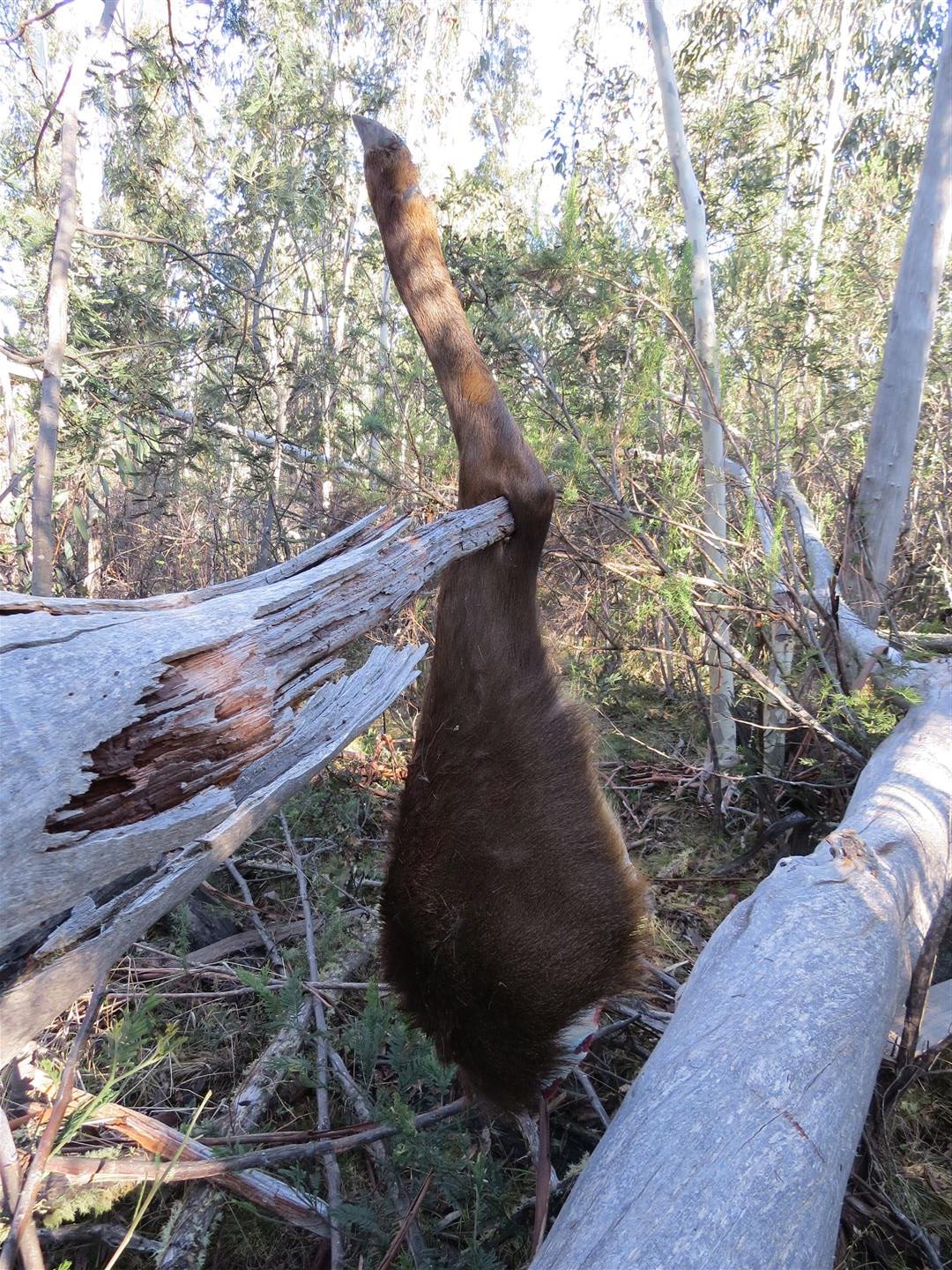
Always ensure your incision with the knife down through the bottom of the chest and into the skin covering the stomach region is lightly done with just enough penetration to break the skin. Always be mindful that you don’t insert the tip of the knife too deep and open up the stomach contacts. This will not only taint the meat but also potentially contaminate it with any bacteria that might be in the stomach contents. Generally deer are very healthy and clean, but you always want to mitigate any risks and take precautions with venison destined for the table. Some hunters will use a knife with a gut hook on the back of the blade to make this process easier and others will develop a method of running their fingers along the back of the blade as the stomach region is cut. This keeps control of how deep the knife goes in. Another good tactic is to lift up the skin with two fingers on the opposite hand your holding the knife and keep them parallel to where the end of the knife as you cut. This will give you a bit more room to move with the end of the blade making the cut. If you don’t attempt to do something with this crucial cut normally the stomach contents press against the underside of the skin and are very easily opened up with the gutting cuts.
From here on you can do a couple of things, either break the animal down and hang the pieces up in the shade with the skin on to lower their temperature or you can remove the legs and backstraps, skin them and place them in bags. There are two schools of thought with the skin, some guys will just remove it and place the meat in bags to transport it to the esky while others will keep the skin on to protect the meat from dirt and dust but also so it doesn’t dry out and loose moisture in a breeze. I personally think if the meat is going into the esky in a short space of time then its fine to remove the skin, but if I am going to hang the legs up from a rope over night around camp on a cold night, I would probably leave the skin on and then remove the hair before they go into the esky.
Hanging the meat up to allow air to circulate will get the meats temperature nice and low quickly and that’s ideal. Just like in an abattoir, the aim is to lower the body temperature as quickly as possible. If the day is warm or hot, I will definitely try to get the meat into an esky as soon as possible. If you do hang meat up always be mindful of the prospect that flies will be visiting so take some duct tape or extra rope and ensure that your bags fully enclose the meat inside. It will pay to check your meat on the warmer days if it’s not in the esky to ensure flies haven’t found a way inside. European wasps and even ants can also be a handful so keep these guys away as well. They will both gladly munch down on any meat they can and bring their mates with them.
Some people might have seen hunters leaving deer carcasses or cuts of deer in streams. This is generally done on warmer days and serves a few purposes. Normally the water in deer country is cold so it will cool the meat, it also protects it from insects, and if there is any blood left in the meat a fair percentage of it will get washed away through the motion of water passing through and over the meat/carcass. The down side to placing meat for human consumption in water is that you don’t know about any potential bacterial issues upstream. There could be dead animals around the bend or in a side creek that are rotten and putrid sitting in the water and whilst most of our water ways in deer country are pretty clean and many hunters often drink from them, there is always the chance that contamination of some sought is occurring upstream. Give it some thought before placing venison in the water, as there are plenty of alternative options to cool and protect your hard earned deer.
If you have a cold esky on hand soon after shooting a deer, I still like to let the meat cool a little naturally before placing it on ice. Putting warm meat on ice will just melt everything quite quickly and if the meat is a few degrees cooler you will get more days out of the ice if you are staying in the bush. Hanging the meat in any breeze in the shade will soon cool it down and make it a lot more suitable for hitting the esky. Once on ice I also like to check the meat, drain any blood or water in the bottom and shift the meat to ensure everything is cooling at the same rate. Sometimes on the larger cuts I will turn them over if I don’t have enough ice to cover everything in the esky.
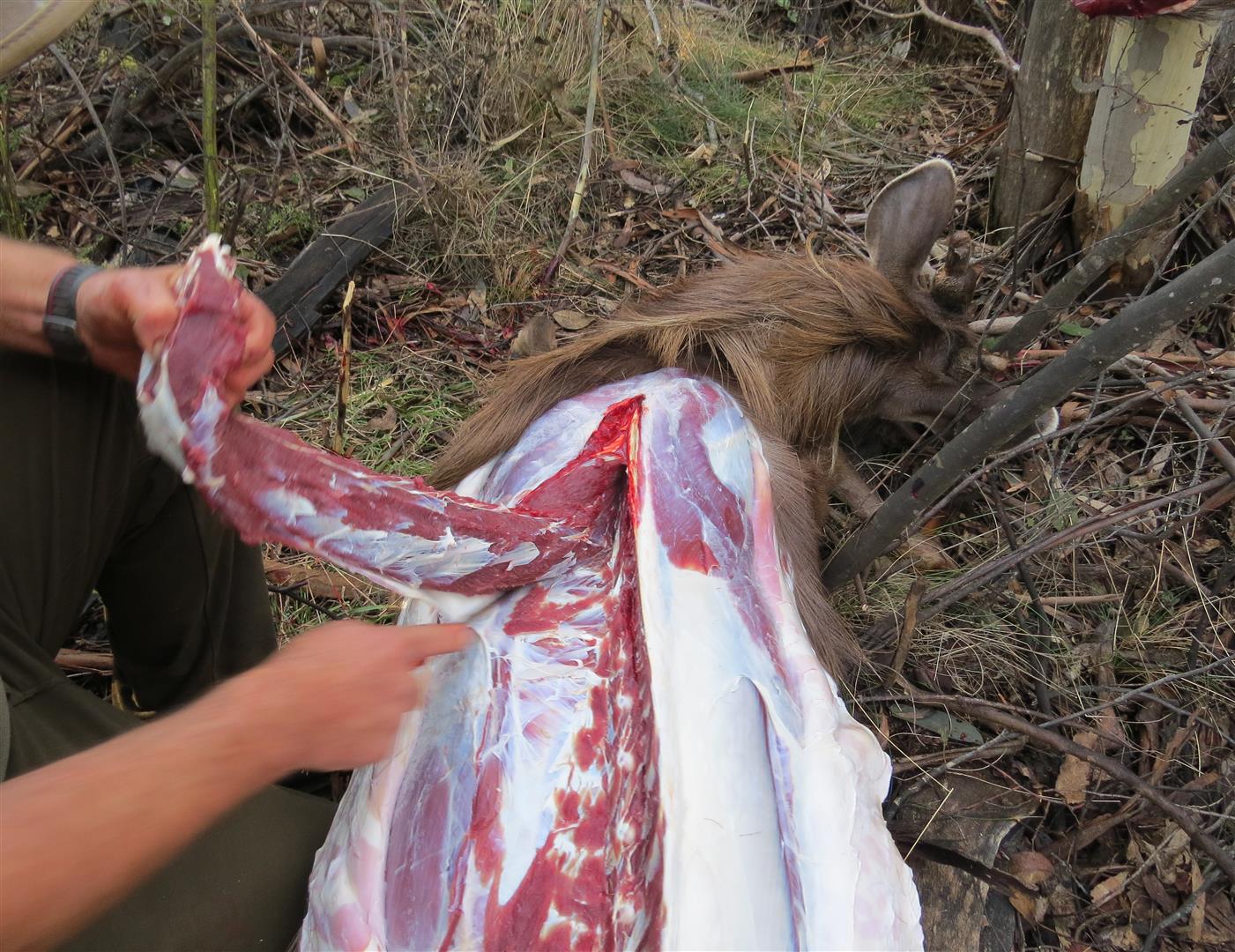
Remember a sambar deer is quite large so it might be better to have a couple of eskies to spread the meat out rather then stacking it tight to fit it in. Something else you can do is remove the bones from the legs, this will reduce size of the meat you are chilling and also allow the meat to cook quicker. Many hunters keep the bones in until they get home, that is fine and it can be a great source of nourishment for dogs, but if your pushed for space, then consider taking out the bones as soon as possible.
Once you get the meat home you can either process it and then put it in the freezer or you can sit in the bottom of a fridge for a while to age. I always like to sit any meat in the fridge for a week or two as it is easier to cut up and certainly the ageing process helps with tenderizing the meat. Often I will get a backstrap, keep it in a plastic bag and simply leave it in the fridge cutting the pieces up as I need them to cook with. It is like having your own butcher shop and you can do many dishes with a backstrap. The longer it stays in the fridge the more tender it will get.
From start to finish the hunting of sambar for the purpose of putting meat in our freezers is a wonderful pastime. Fully utilizing any resource justifies the harvesting process and taking the life of an animal, so next time you walk up to a sambar you have just shot, give it some thought as how best to turn this wonderful game animal into delicious meals at the dinner table.